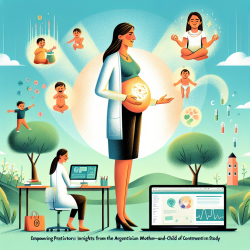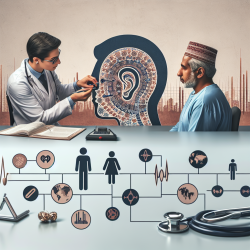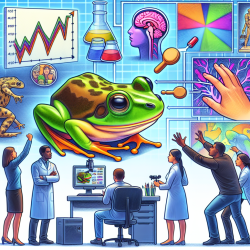Introduction
As practitioners in the field of special education and therapy, understanding the environmental factors that influence child development is crucial. The Argentinian Mother-and-Child Contaminant Study offers valuable insights into the impact of environmental toxins on maternal and child health. This blog aims to empower practitioners by highlighting key findings from the study and suggesting ways to incorporate these insights into practice.
Understanding the Study
The Argentinian study focused on the exposure to persistent toxic substances (PTS) in delivering women from two regions: Ushuaia and Salta. These regions were chosen due to their distinct environmental and socioeconomic conditions. The study aimed to quantify the levels of organic and inorganic toxins in the blood of delivering women and assess the associated health risks.
Key findings include:
- Higher levels of environmental pollution in Salta compared to Ushuaia.
- Significant differences in socioeconomic status and health outcomes between the two regions.
- Widespread use of pesticides in Salta, posing a potential risk to maternal and child health.
Implications for Practitioners
Understanding these findings can help practitioners in several ways:
- Enhancing Awareness: Practitioners can educate families about the potential risks of environmental toxins and encourage healthier lifestyle choices.
- Advocating for Change: By understanding the environmental factors affecting health, practitioners can advocate for policies that reduce exposure to harmful substances.
- Personalizing Therapy: Knowledge of a child's environmental background can help tailor therapeutic approaches to better meet their needs.
Encouraging Further Research
The study highlights the need for comprehensive assessments of environmental exposures in the Southern Hemisphere. Practitioners are encouraged to engage in or support further research to deepen our understanding of how environmental factors affect child development.
Areas for further research include:
- Long-term effects of PTS exposure on child development and learning abilities.
- Effective interventions to mitigate the impact of environmental toxins.
- Comparative studies across different geographical regions to identify universal and region-specific risks.
Conclusion
By integrating the insights from the Argentinian Mother-and-Child Contaminant Study into practice, practitioners can better support the health and development of children. This study serves as a reminder of the complex interplay between environment and health, urging us to remain vigilant and proactive in our efforts to create healthier futures for our children.
To read the original research paper, please follow this link: The Argentinian mother-and-child contaminant study: a cross-sectional study among delivering women in the cities of Ushuaia and Salta.










